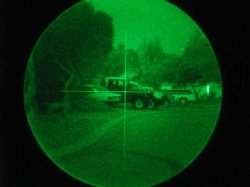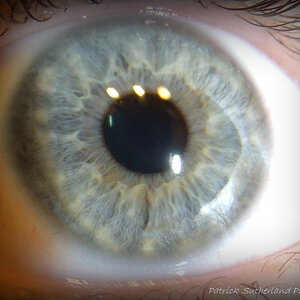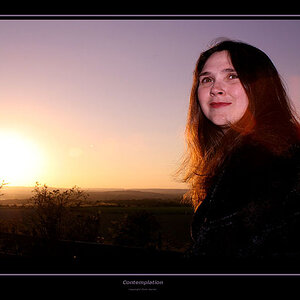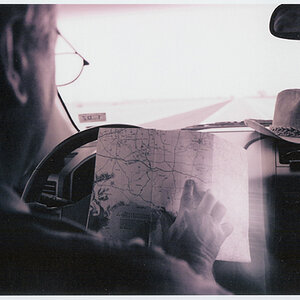hamlet
No longer a newbie, moving up!
- Joined
- Sep 12, 2013
- Messages
- 2,894
- Reaction score
- 435
- Location
- Belgium
- Can others edit my Photos
- Photos OK to edit
This is a very interesting article that talks about the atom world and how it will change photography.
"1,000 times more sensitive to light: How graphene camera sensors could revolutionize photography"
Singaporean researchers are engineering some seriously futuristic optics at the nanoscale level

You probably aren't too familiar with graphene, but you soon will be. Basically, it's a two-dimensional arrangement of carbon atoms fit together like a honeycomb. Each sheet is just one-atom thick, giving it a structural integrity that makes for the the world's strongest material. It also has some pretty magical properties that are perfect for tomorrow's electronics.
Not only is graphene extremely flexible, durable, and conductive to electricity, but it also possesses the unique ability to "absorb light over a very broad wavelength range," notes ExtremeTech. With some minor nanostructural changes and the addition of a transistor, graphene can help us see things today's best optics can't even in near-total darkness.
Researchers in Singapore have now tapped graphene's superior imaging capabilities to build a camera sensor that's 1,000 times more sensitive to light than those found in today's CMOS or CCD camera sensors. Better yet, the graphene sensor consumes about 10 times less energy, and will reportedly be five times cheaper to produce.
"We have shown that it is now possible to create cheap, sensitive, and flexible photo sensors from graphene alone," Wang Qijie, an assistant professor at Nanyang Technological University who is credited with inventing the graphene sensor, tells Science Daily. "We expect our innovation will have great impact not only on the consumer imaging industry, but also in satellite imaging and communication industries, as well as the mid-infrared applications."
Consider the possibilities: Space telescopes outfitted with graphene sensors could help us peer even further into the universe's oldest corners, discovering galaxies and worlds we would have never seen otherwise. Here on Earth, security cameras could take crystal-clear photos even with all the lights out.
That said, today's manufacturing limitations probably means that graphene won't be coming to your iPhone anytime soon. (Meticulously fitting carbon atoms into a lattice structure is tough work, after all.) But in the not-so-distant future? Those annoying camera flashes making for blurry, washed-out photos could very well be obsolete.
Article: link
This won't stop just at lenses:
"1,000 times more sensitive to light: How graphene camera sensors could revolutionize photography"
Singaporean researchers are engineering some seriously futuristic optics at the nanoscale level

You probably aren't too familiar with graphene, but you soon will be. Basically, it's a two-dimensional arrangement of carbon atoms fit together like a honeycomb. Each sheet is just one-atom thick, giving it a structural integrity that makes for the the world's strongest material. It also has some pretty magical properties that are perfect for tomorrow's electronics.
Not only is graphene extremely flexible, durable, and conductive to electricity, but it also possesses the unique ability to "absorb light over a very broad wavelength range," notes ExtremeTech. With some minor nanostructural changes and the addition of a transistor, graphene can help us see things today's best optics can't even in near-total darkness.
Researchers in Singapore have now tapped graphene's superior imaging capabilities to build a camera sensor that's 1,000 times more sensitive to light than those found in today's CMOS or CCD camera sensors. Better yet, the graphene sensor consumes about 10 times less energy, and will reportedly be five times cheaper to produce.
"We have shown that it is now possible to create cheap, sensitive, and flexible photo sensors from graphene alone," Wang Qijie, an assistant professor at Nanyang Technological University who is credited with inventing the graphene sensor, tells Science Daily. "We expect our innovation will have great impact not only on the consumer imaging industry, but also in satellite imaging and communication industries, as well as the mid-infrared applications."
Consider the possibilities: Space telescopes outfitted with graphene sensors could help us peer even further into the universe's oldest corners, discovering galaxies and worlds we would have never seen otherwise. Here on Earth, security cameras could take crystal-clear photos even with all the lights out.
That said, today's manufacturing limitations probably means that graphene won't be coming to your iPhone anytime soon. (Meticulously fitting carbon atoms into a lattice structure is tough work, after all.) But in the not-so-distant future? Those annoying camera flashes making for blurry, washed-out photos could very well be obsolete.
Article: link
This won't stop just at lenses:
Last edited by a moderator:






![[No title]](/data/xfmg/thumbnail/41/41921-10ae2355bbcea545815ebd932ee145a7.jpg?1619739944)

![[No title]](/data/xfmg/thumbnail/37/37524-6c51828efbc2361f9cfed53f63f28aa2.jpg?1619738130)

![[No title]](/data/xfmg/thumbnail/41/41922-e7a483d91c9d307d9bb8d6143d03889b.jpg?1619739944)



